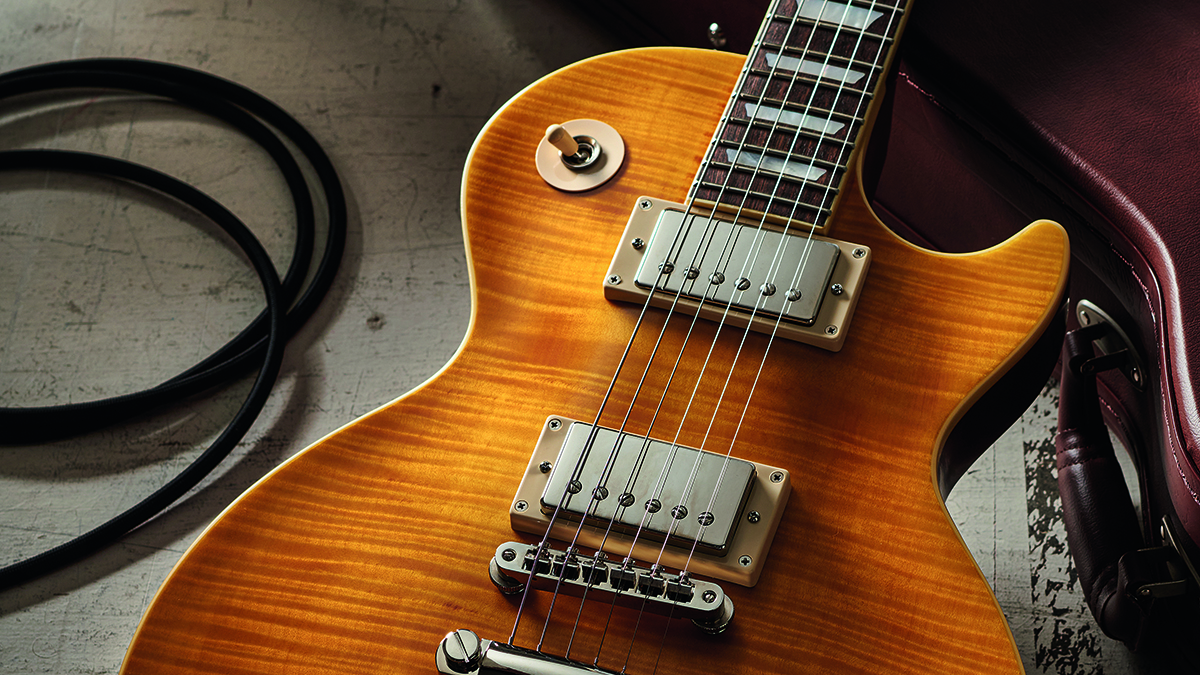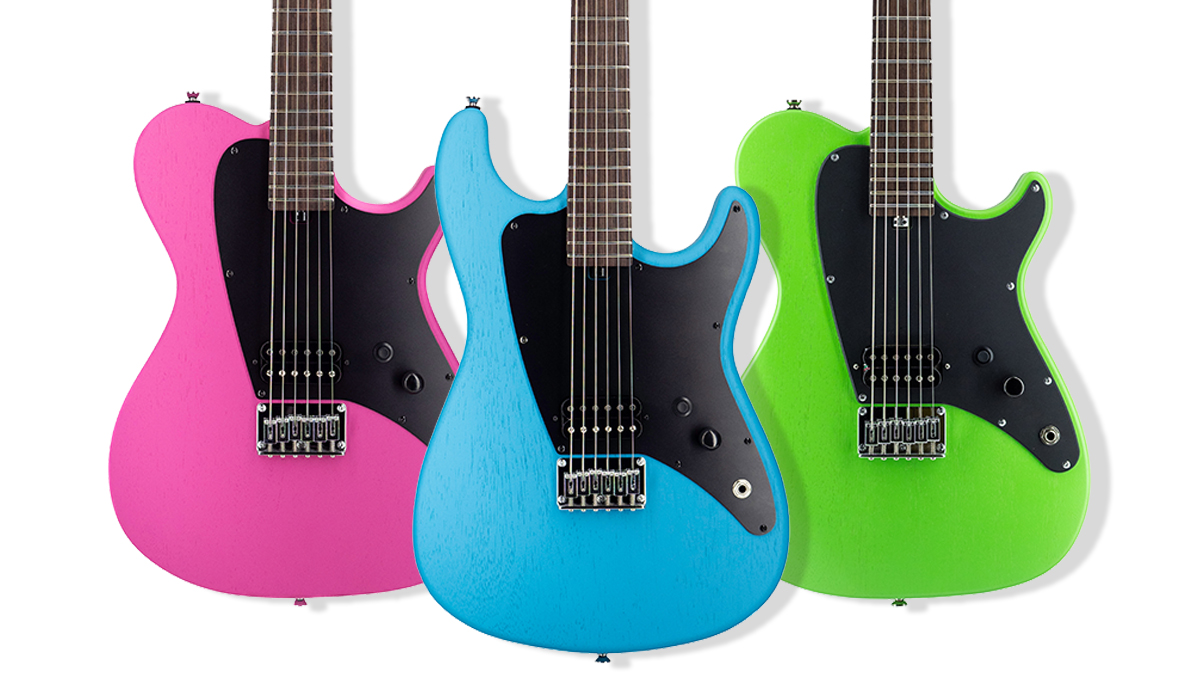“No-one is handing out medals for owning a guitar by a prestige maker”: Guitar prices and the conundrum of high-priced budget electric vs entry-level big-name model – which to choose and why the decision is getting tougher
With top-of-the-line Epiphones challenging Gibson USA models for spec, and being priced accordingly, how do you decide which model is right for you?

Once upon a time, it was obvious where a company’s budget brand ended and its prestige brand began. Squier was to Fender what Epiphone was to Gibson – a respectable alternative for those who couldn’t afford, or chose not to buy, the full-fat version. If you didn’t mind going off-brand entirely, you could buy decent copies by the likes of Tokai.
Today, however, things aren’t quite so simple. Take the Chinese-built Epiphone Kirk Hammett ‘Greeny’ 1959 Les Paul Standard, for example. Not only does it possess the classic ‘open book’ Gibson headstock shape (a thing hitherto denied to Epiphone buyers), but, at $/£1,499 it's priced similarly to the current entry-level Gibson USA Les Paul – the rather skinny and spartan Les Paul Modern Lite, which can be had for $/£1,449.
Gibson loaded the Epiphone with goodies such as the ‘proper’ headstock shape, Gibson USA ‘Greenybucker’ pickups, a one-piece neck, CTS Potentiometers, Mallory Capacitors and more besides – leaving you to decide if the combined effect was worth more than having the coveted ‘Gibson’ logo on the headstock of the Les Paul Modern Lite, which is not a bad guitar per se but lacks frills of any kind.
Essentially, the Epiphone represents the high-end of affordable lutherie, while the Gibson represents the low-end of premium guitar-making.
These two frontiers have never really been allowed to overlap so obviously before, so guitar buyers are maybe a trifle unprepared for the mental calculus involved in figuring what they should buy.
A look at the comments below Guitarist’s video demo of the Epiphone Kirk Hammett ‘Greeny’ is instructive: “I’ve been a long time Epi supporter, but the recent price hike (and for this model in particular) has lost me entirely. Gibson need to rethink their strategy for the Epi brand,” one viewer fulminated.
Another chimed in, more positively: “I don’t understand the complaints about it being Chinese and an Epiphone. People seem to forget that Gibson used to be the cheaper option and Epiphone the more expensive option. So why shouldn’t Epiphone strive to get back to making higher-end guitars? Doesn’t matter to me, if it’s a great guitar it’s a great guitar.”
All the latest guitar news, interviews, lessons, reviews, deals and more, direct to your inbox!
There’s no right answer, of course – just a soup of strong, subjective feelings with some chunks of rational argument floating around in it.
Lest this sound like an issue unique to Gibson, buyers face similar (but subtler) conundrums when, for example, choosing between a beautifully made but stripped-down guitar such as the Manson Verona Junior (£1,399) and something like the Mexico-built Charvel Pro-Mod Relic San Dimas Style 1 HH ($1,599/£1,259). The former is made in the flagship British workshop of the highly respected company that Muse star Matt Bellamy has a majority stake in.

Reviewing the Manson Verona Junior, our own Dave Burrluck enthused that, “when a guitar plays and sounds as good as this one, it’s a little hard to be objective…” Balanced against that, however, is the fact that the Verona Junior has only one (albeit very good) pickup, no tone control and a well-executed but fairly basic open-pore finish.
By contrast, the Charvel – which belongs in broadly the same category of contemporary rock guitars – has a Floyd Rose, an aged nitro finish (though a somewhat rudimentary relic job), Seymour Duncan JB and ’59 humbuckers, plus a compound radius fretboard, too.
On paper, arguably, the Charvel offers a more comprehensive package for a little less. But how do you put a price on the boutique-grade finesse and attention to detail that the Manson embodies?

To help untangle the tricky choice buyers face when making choices such as this, it’s important to separate functional benefits from purely subjective stuff.
On the functional side are things such as: hardware and component quality, useful features, and build quality.
How do you put a price on the boutique-grade finesse and attention to detail that the Manson embodies?
On the subjective side are things such as: brand cachet, heritage, and artist associations. There’s probably a third category that’s a bit of both, such as: resale value, exclusivity and collectibility, and country of origin.
There are more factors in play than these, but you get the idea. So how do you weigh all this up if you’re shopping in the tricky price band where cheaper high-end electrics compete for your money with the high-end of mainstream brands?

Firstly, it’s important to accept that, unless you are unusually pragmatic, the presence of a famous or fashionable name on the headstock probably will influence how much you want to own a guitar to some degree. So maybe it’s best to acknowledge whatever snobbery lurks within us, rather than pretend we’re above such things.
So if you really can’t get past having the ‘wrong’ brand name in your field of view there’s not much point, in the long term, buying a guitar by that maker just because it represents good value for money or is cheap enough to buy today rather than save for.
The good news, if you are of that way of thinking, is that if you buy even a basic guitar by a well-known premium brand it will generally hold its value and sell pretty easily if you later decide to sell it. Also, the tonewoods, hardware and so on are hopefully all of a quality that you’d expect of top brands (though it pays to check).

Weighed against that is the practical experience of playing the guitar in question – do you get goosebumps when you play it? Is it hard to put down once you pick it up? Does it have enough features to serve your musical needs properly?
After all, if you play in a function band, you might struggle a bit with a single-pickup guitar with a hot humbucker in it, even if it is by a Very Cool Brand.
High-quality, versatile models from affordable product lines, such as PRS’s SE Silver Sky, could represent a better option for longterm satisfaction than a dirt-basic model by a higher-end brand.
This writer learned that the hard way when, aged 17, he went to Denmark Street and bought a Ferrari Red single-pickup Gibson USA Melody Maker because, well, it just had to be a Gibson and that was the only one he could afford.
No-one is handing out medals for owning a guitar by a prestige maker
Though a decent enough guitar, its lack of features was rather limiting and it was soon sold on for a standard Mexico-built Strat that was used for many enjoyable gigs and that is still remembered fondly today.
So brand cachet alone isn’t enough to make a ‘keeper’. And, after all, no-one is handing out medals for owning a guitar by a prestige maker.
The reality is that, as we have often said before, the best guitar to buy is one you feel an immediate connection with – and that isn’t always the guitar you thought you were looking for.
This writer snobbishly dismissed ’70s Gretsches before picking up a well-used Country Club that almost seemed to play itself and sounded sensational. If it had been for sale, I’d have bitten the owner’s arm off.
So perhaps, in the final analysis, it’s best to permit yourself to be persuaded by the guitar itself, and let the chips fall where they may.
Jamie Dickson is Editor-in-Chief of Guitarist magazine, Britain's best-selling and longest-running monthly for guitar players. He started his career at the Daily Telegraph in London, where his first assignment was interviewing blue-eyed soul legend Robert Palmer, going on to become a full-time author on music, writing for benchmark references such as 1001 Albums You Must Hear Before You Die and Dorling Kindersley's How To Play Guitar Step By Step. He joined Guitarist in 2011 and since then it has been his privilege to interview everyone from B.B. King to St. Vincent for Guitarist's readers, while sharing insights into scores of historic guitars, from Rory Gallagher's '61 Strat to the first Martin D-28 ever made.


